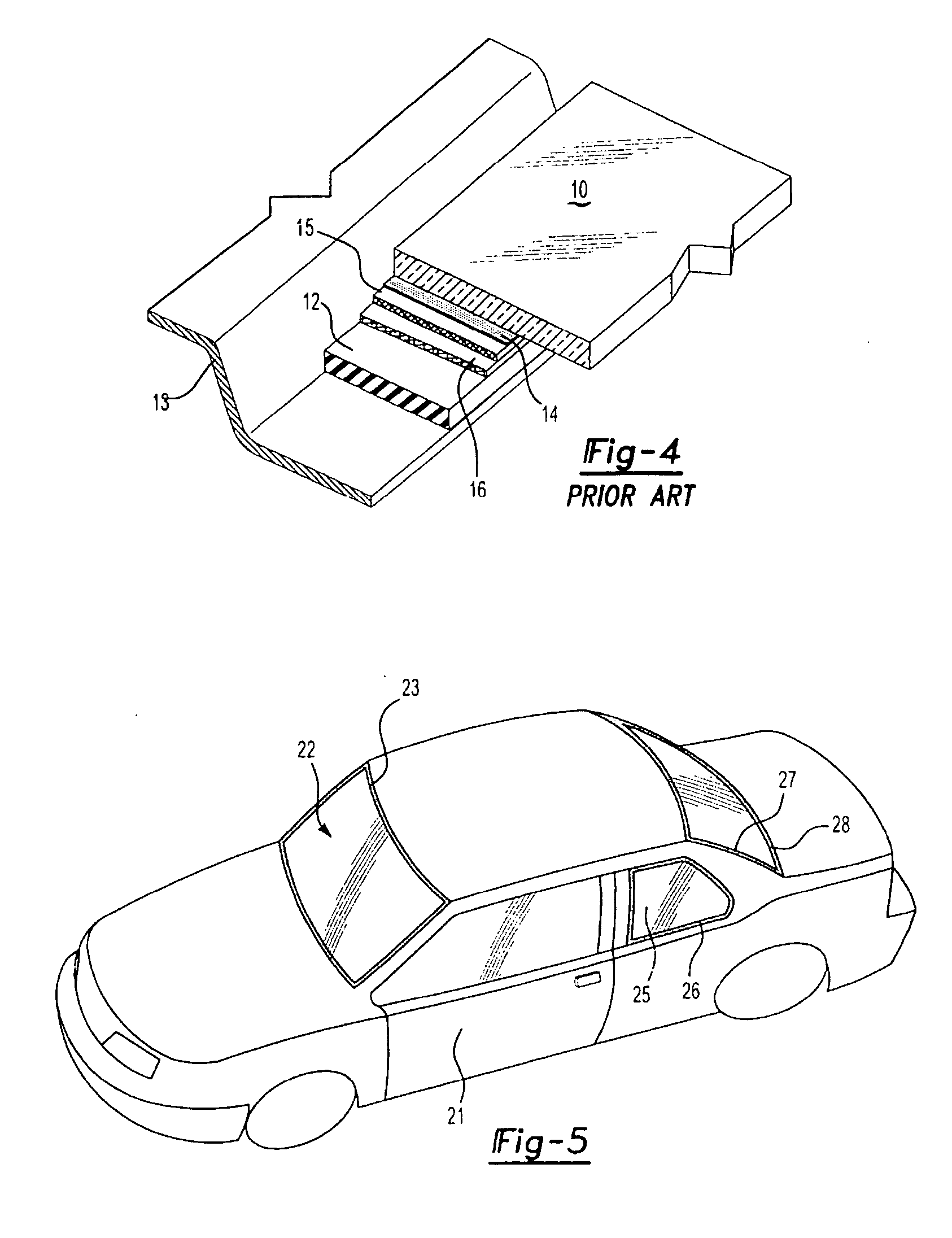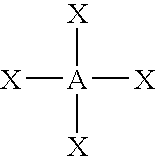Protective coating for window glass
a protective coating and window glass technology, applied in the field of glass coatings, can solve the problems of difficult recycling of glass, undesirable high temperatures necessary to cure ceramic enamels, etc., and achieve the effect of good opacity
- Summary
- Abstract
- Description
- Claims
- Application Information
AI Technical Summary
Benefits of technology
Problems solved by technology
Method used
Image
Examples
specific embodiments of invention
[0095] The following examples are included for illustrative purposes only and are not intended to limit the scope of the invention. Unless otherwise stated, all parts and percentages are by weight.
examples 1-9
[0096] Several coating formulations of the invention were made as described hereinafter.
[0097] The following components were added to a Max 60 cup and speed mixed for 30 minutes to insure that inhibitor and dispersant are fully dissolved, and to wet out the pigments and fillers with resin.
TABLE 1Examples1 to 71 to 78899Wt.Wt.Wt.componentGramsPercentGramsPercentGramsPercentisobornyl acrylate24.60016.40011.48016.411.16515.950tripropylene glycol diacrylate12.2258.1505.7058.1505.7058.150acrylic acid8.9405.9604.1725.9604.1725.960acrylated polysiloxane10.6000.4000.2800.4000.2800.400inhibitor20.7500.5000.3500.5000.3500.500dispersant30.6750.4500.6300.900urethane acrylate442.96028.64020.04828.6020.04828.640carbon black56.7504.5003.1504.5003.1504.500alumina652.50035.00024.50035.00024.50035.000Total150.000100.00070.000100.0070.000100.00
1TEGO RAD ™ 2100 acrylated polysiloxane additive available from Tego Chemie (Degussa).
2ADDITIVE ™ 01-468 free radical polymerization inhibitor from Rahn.
3S...
example 10
[0102] The following order of addition of the components was used: isobornyl acrylate (GENOMER™ 1121, Rahn); 12.70 g, tripropylene glycol diacrylate (TRPGDA™, UCB), 6.00 g, acrylic acid (from Acros Organics), 5.34 g, tetraethyl orthosilicate (SILBOND™ pure, SILBOND), 5.00g, polyether modified polydimethylsiloxane (BYK™ UV 3510, BYK-Chemie), 0.36 g, polymerization inhibitor (ADDITIVE™ 01-468, Rahn), 0.50 g, polymeric dispersant (SOLSPERSE™ 32000, Avecia), 2.20 g, and aliphatic urethane acrylate oligomer (CN™ 985B88, Sartomer), 21.10 g. The components were added to a “Max 60 Cup” from Flack Tek and then speed-mixed using a Hauschild Speed Mixer DAC 150 FVZ-K at 1000 to 1500 RPM for 4 minutes. The mixing process was repeated again for another 4 minutes to insure a homogeneous formulation. This homogeneous formulation was then poured into an 8 oz (237 ml) plastic NALGENE™ bottle, then carbon black pigment (MOGUL™ E, Cabot), 11.00 g and alumina (RC LS DBM, Baikowski-Malakoff), 32.02 g we...
PUM
| Property | Measurement | Unit |
|---|---|---|
| Fraction | aaaaa | aaaaa |
| Fraction | aaaaa | aaaaa |
| Percent by mass | aaaaa | aaaaa |
Abstract
Description
Claims
Application Information
 Login to View More
Login to View More - R&D
- Intellectual Property
- Life Sciences
- Materials
- Tech Scout
- Unparalleled Data Quality
- Higher Quality Content
- 60% Fewer Hallucinations
Browse by: Latest US Patents, China's latest patents, Technical Efficacy Thesaurus, Application Domain, Technology Topic, Popular Technical Reports.
© 2025 PatSnap. All rights reserved.Legal|Privacy policy|Modern Slavery Act Transparency Statement|Sitemap|About US| Contact US: help@patsnap.com



